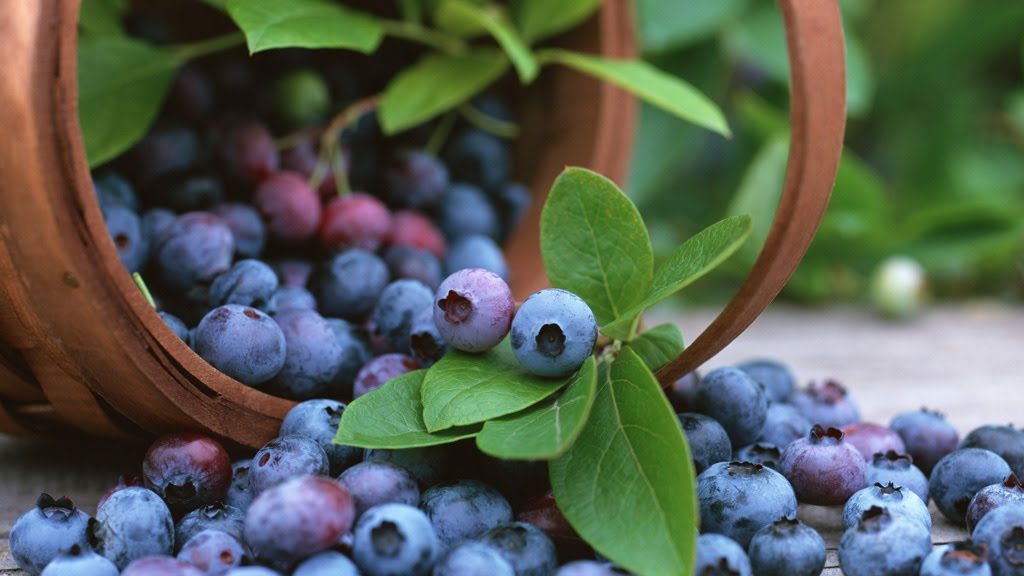In the natural foods business, we are always looking for the next “superfood.” Last year it was mangosteen, a tropical fruit from southern Asia. This year it is goji berries, a Tibetan food from the Himalayas. Both are revered in their native habitats and have long traditions of use as health supporting foods. Both have justifiably generated a great deal of buzz among health seekers. Yet, there is a food growing in many of our backyards which may be every bit as potent and beneficial as either of these exotic fruits. I am talking about our wild Alaskan blueberry.
What all these so-called “superfoods” have in common are high levels of anti-oxidants. Anti-oxidants are plant chemicals that protect our cells from damage caused by free radicals, a by-product of normal metabolism. As it turns out, blueberries have more cell-protecting antioxidants than any other common fruit or vegetable. In tests at the USDA Human Nutrition Research Center on Aging at Tufts University in Boston, blueberries beat out 39 other common fruits and vegetables in antioxidant power. Much of that power comes from the pigment which gives blueberries their deep blue color: Anthocyanins. Have you ever noticed that wild blueberries have a deeper, more intense color than the cultivated ones? Since it is the pigment in blueberries that accounts for their potency, doesn’t it stand to reason that that the more deeply colored wild berries would be more potent? Turns out they are. New USDA research has discovered that wild blueberries have 48% more antioxidants than their cultivated cousins.
The list of potential health benefits from consuming blueberries is impressive. They may be helpful in fighting aging, cancer, heart disease, urinary tract infections, and promoting healthy vision. They may also help improve memory. In laboratory studies, older rats fed a diet of blueberries not only navigated mazes faster, they also had better balance and coordination-skills regulated by the brain.
Of course, it hardly needs mentioning that blueberries are delicious. My favorite way to eat them is right off the bush. Eaten this way, you can best appreciate the subtle differences in flavor that come from different soils, moisture, companion plants, and sun exposure. Unfortunately, the blueberry season here lasts for only a month or two, and during summers like this one, the dry days for picking are few and far between. While I like to pick as many berries as I can during the season, it seems like there are never enough for jams, pies, and freezing. To make the precious wild blueberries go farther, sometimes I will mix them half and half with store-bought cultivated ones in pies and crisps. The intense flavor of wild berries and the sweetness of the cultivated ones combine quite nicely, although nothing has as deep a flavor as the wild berries alone.
Here is a recipe for a simple blueberry crisp. I generally use kuzu as a thickener for my blueberry pies and crisps. Kuzu is Japanese arrowroot. Not only is it a superlative thickener, but it is soothing for the stomach and strengthening for the intestines. You can substitute cornstarch or other thickener of your choice. I also like to use Sucanat instead of sugar as a sweetener. Sucanat is minimally processed sugar cane which retains the nutrients found in the sugar cane plant. It has a deeper, more complex flavor than refined or brown sugar, which makes it my sweetener of choice for cookies, cakes and pies.
Blueberry Crisp:
4 cups blueberries
1 cup Sucanat
3 tablespoons Kuzu root starch
2/3 cups rolled oats
1/3 cup flour
1 cup honey
2 tablespoons chopped walnuts
6 tablespoons butterMix the blueberries and Sucanat in a pot and put them on a burner at a medium low setting. Immediately mix the Kuzu in just enough cold water to dissolve it all, and stir the solution into the pot with the berries. Gently cook the blueberry mixture until it begins to thicken, stirring as you go. When it starts to gel, pour it into a pie pan or 1-quart casserole. Melt the butter in a saucepan. Add the honey when the butter has melted, then pour the butter-honey mixture into a bowl with the rolled oats, flour, and walnuts. Stir it all together, then spoon it over the top of the berry mixture. Bake in a pre-heated 375-degree oven until lightly browned, about 35 minutes.


